Did you ever walk down the street and see a stranger whose features remind you of someone else?
Convergent Evolution
The same is surprisingly true of plants. Because of convergent evolution – the evolution of similar structures by organisms of vastly different lineages – plants and animals occupying similar niches in widely separated geographical areas will resemble each other since they face similar ecological challenges. For example, cacti and euphorbia physically resemble each other with their thorns and tough outer coverings as well as occupying similar ecological niches – infertile, arid lands. However, with one exception all cacti are New World plants, while Euphorbias are found world-wide.
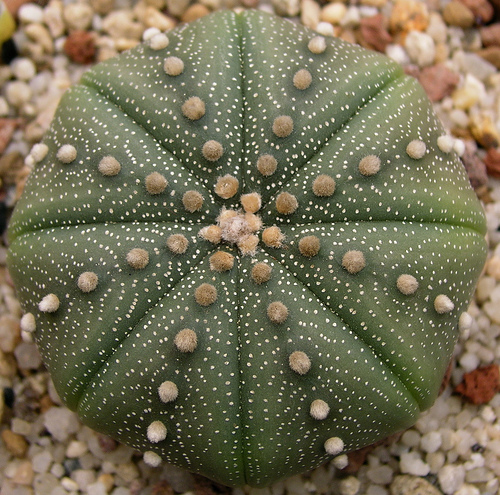
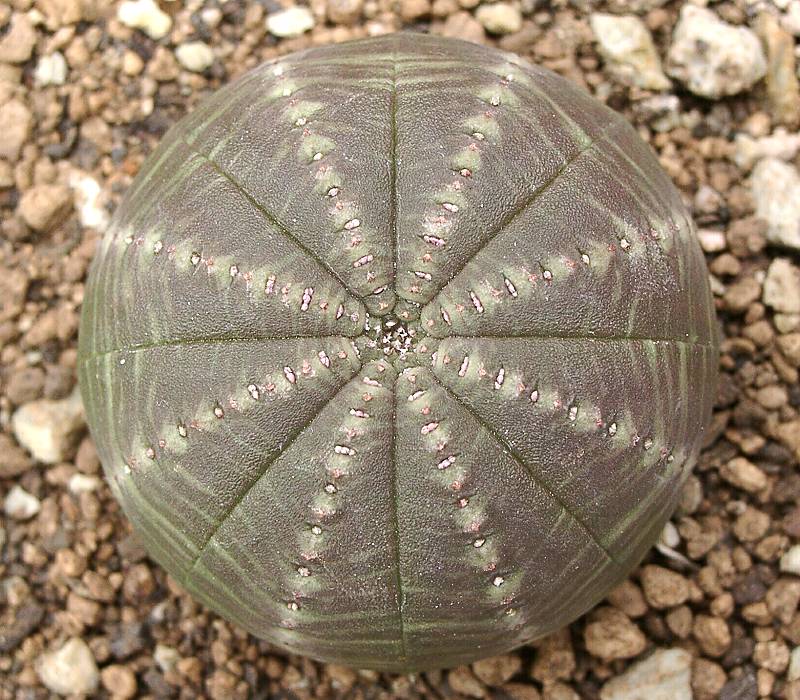
I had the same experience of familiarity once when browsing tables of cacti and succulents and seeing a succulent that reminded me of mammoth teeth although no convergent evolution implied.
Mastodons and Mammoths
Years ago we traveled in Alaska and made a stop in Fairbanks at the University of Alaska’s Museum of the North. We spent most of our visit at the natural history display of the area.
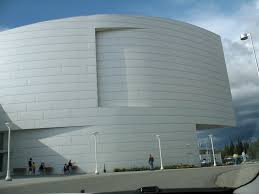
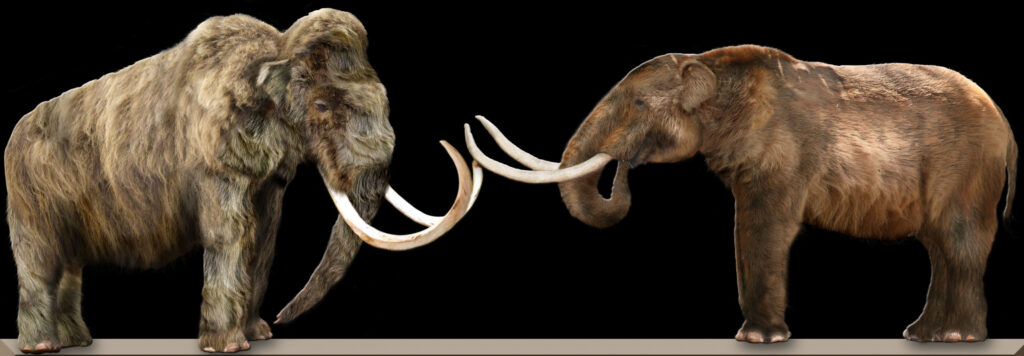
And while I was already aware that mastodons and mammoths were different animals, I received an intense education on the subject . One of the distinguishing characteristics is the very different type of tooth structure.
But with my fascination with textures and patterns produced by natural forces, I was captivated by the surface appearance of the mammoth teeth which are flat and ridged with a pattern reminiscent of free-motion quilting called by my instructor “earthworms”.
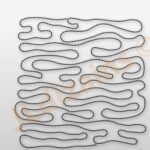
Haworthia truncata
That plant that so reminded me of mammoth teeth is a succulent called Haworthia truncata.
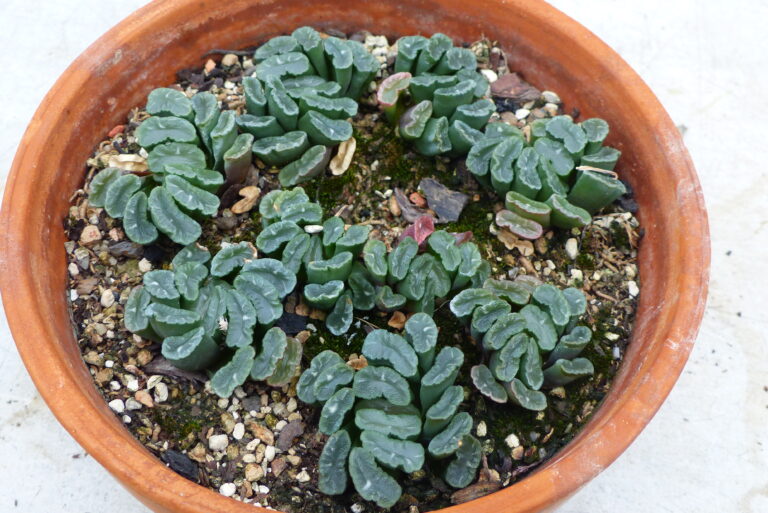
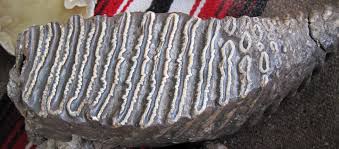
The genus Haworthia was named in honor of Adrian Hardy Haworth (1767-1833), an English entomologist, botanist and carcinologist – hard to believe but it means a person who studies crustaceans – and in his case, his specialty was shrimp.
Truncata comes from the Latin truncatus meaning cut off and, in this case, the tops of the leaves are perpendicular and perfectly straight across, as if cut off. Hawarthias are native to South Africa and are members of the Order Asparagales like our asparagus.
Haworthias have a number of interesting features. The first is contractile roots similar Skunk Cabbage (Symplocarpus foetidus) and hyacinths. Contractile roots are very fleshy from water stored inside them as it becomes available to the plant either from snow melt or summer thunderstorms. These roots actively pull parts of the plant underground for protection from the sun and heat during hot, dry summers. This action appears to be facilitated by channels created alongside the roots in the soil as they contract due to water loss during the dry season.
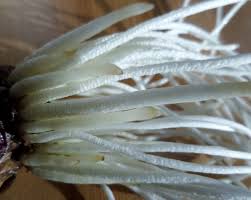
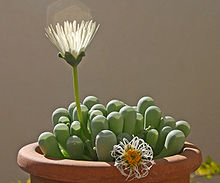
The second special feature is fenestrate leaves. Fenestrate comes from the French word for window – fenetre . Along with some of the peperomias and mesembryanthemums, this is a leaf adaptation – a translucent window if you will -that allows light to penetrate inside the leaf where photosynthesis occurs – and prevents excessive water loss at the same time.
But what of the mammoths, mastodons and their cousins, the modern elephant? Well, they are clearly not closely related to the Haworthia truncata but over time, one begins to notice repetitions of patterns.
Order Proboscidea
All of these animals are related and belong to the Order Proboscidea – those mammals having trunks -the name of which comes from the Latin proboscis meaning nose. Surprisingly, they are distantly related to manatees and dugongs, both marine animals, as well as to hyraxes. The later is a furry, gopher-like mammal that I have seen in the Ein Gedi oasis in Israel, although they can be found throughout the country. Proboscidea appeared in evolutionary history about 60 million years ago (MYA). Mastodons (Genus Mammut) appeared around 29MYA and mammoths (Genus Mammuthus) about 5MYA, around the same time as elephants ( Genus Loxodonta). Although they resembled one another, there were differences. . The basic body shape of mastodons resemble elephants while mammoths had a domed head and a humped back.
Grazers vs Browsers
Grazing animals eat grasses and other low vegetation while browsers eat leaves, shoots or fruits of trees or shrubs. Mammoth teeth resemble elephant teeth in surface appearance and mammoths appear to have been grazers, although elephants are both grazers and browsers. The mastodon teeth have protrusions on their tooth crowns – hence their name which means nipple teeth -indicating that mastodons were probably browsers. All these animals have varying numbers of molars in their jaws that are replaced up to six times over the animals lifetime. The new teeth seem to be on a “conveyor belt” moving forward to replace worn-out teeth, which fall out. An animal that outlives its teeth will die of starvation.
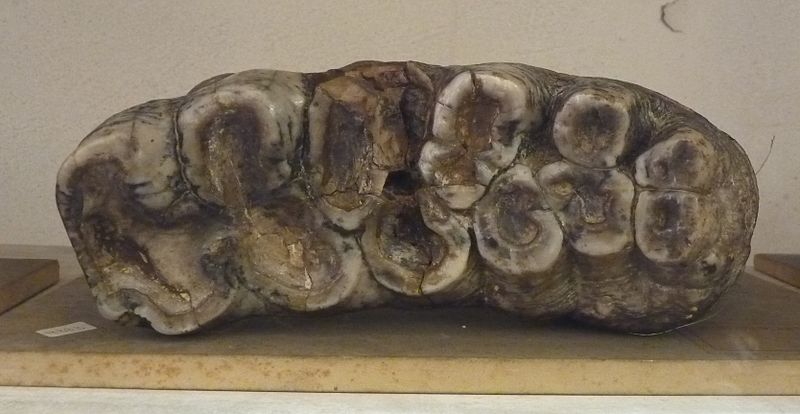
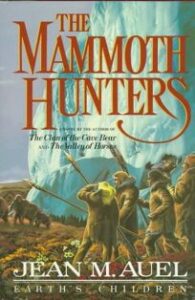
Remember the Clan of the Cavebear series by Jean Auel? The third book was The Mammoth Hunters!
If you have enjoyed this piece, please consider buying my book, an anthology of other pieces – A Habit of Seeing: Journeys in Natural Science.
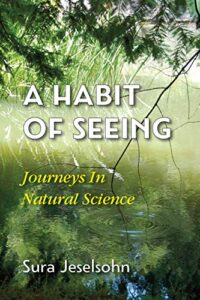
Dear Sura,
Beautifully written. I have quite recently read the whole series of Jean Auel (I think six books). And I am glad to read 60 mio. and 5 mio. years. 29 mio. could be improved to 30 …
Shabbat shalom
David
I thought the first volume was the best. All your comments are taken seriously.
https://www.cactus-art.biz/notebook/Dictionary/aaa_Dictionary_pictures/translucent_fenestrate_haworthia_and_lithops.jpg Yes, more pictures be better.
It’s clever how U motivate us Ancient Ivory lovers to read on about less charismatic plants. Please save Saturday, February 27th for an 0nline Bronx Parks SpeakUp27 Your essays might have indexed references.
Sorry, the link to a nice pic doesn’t work. )-: